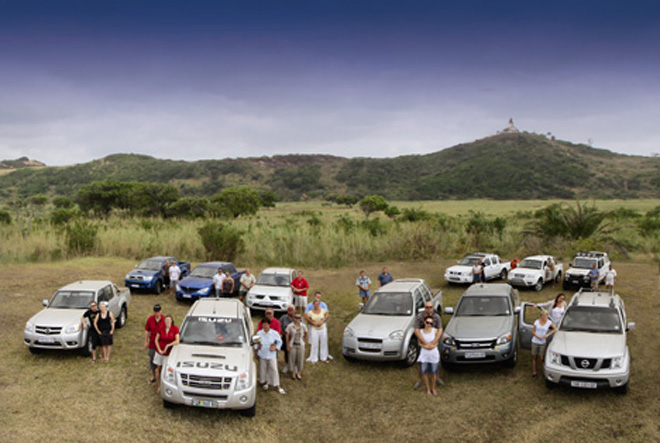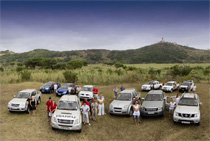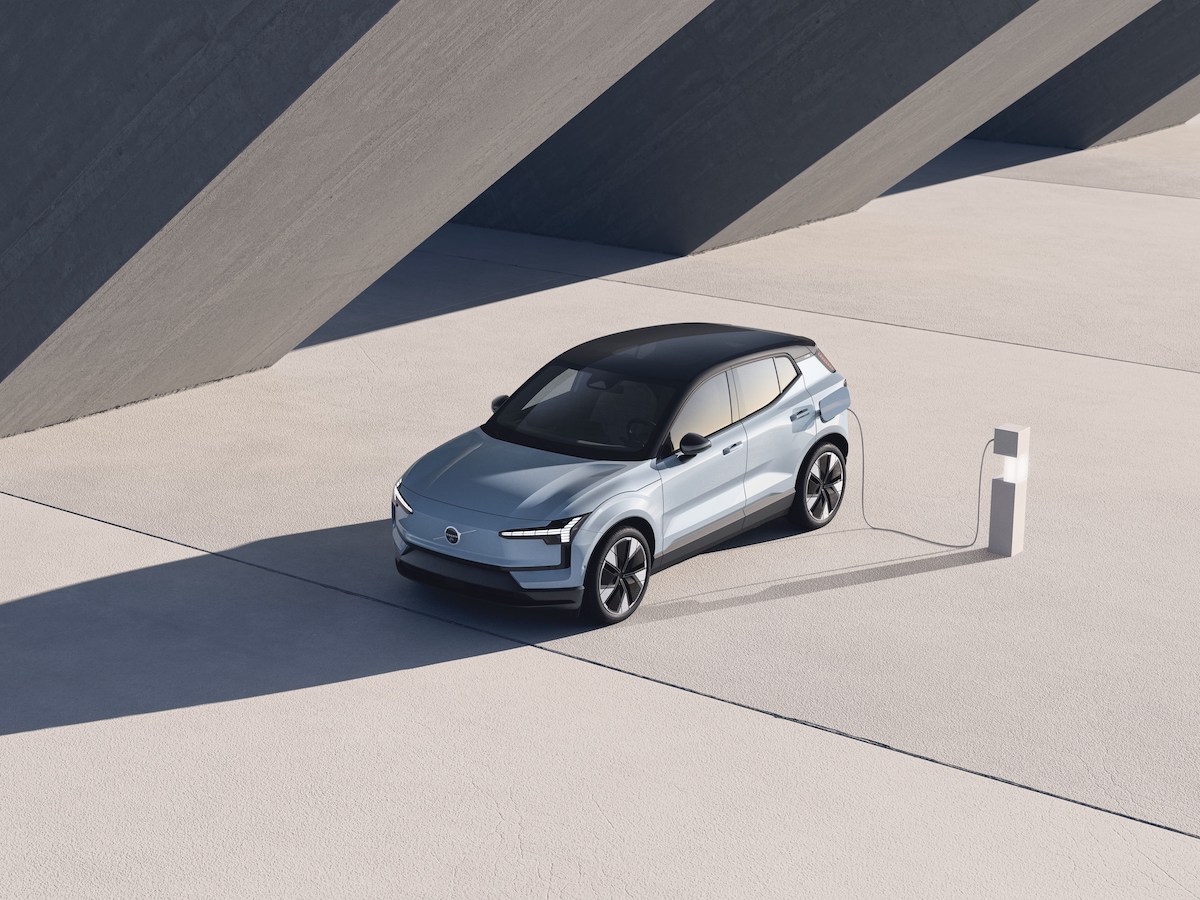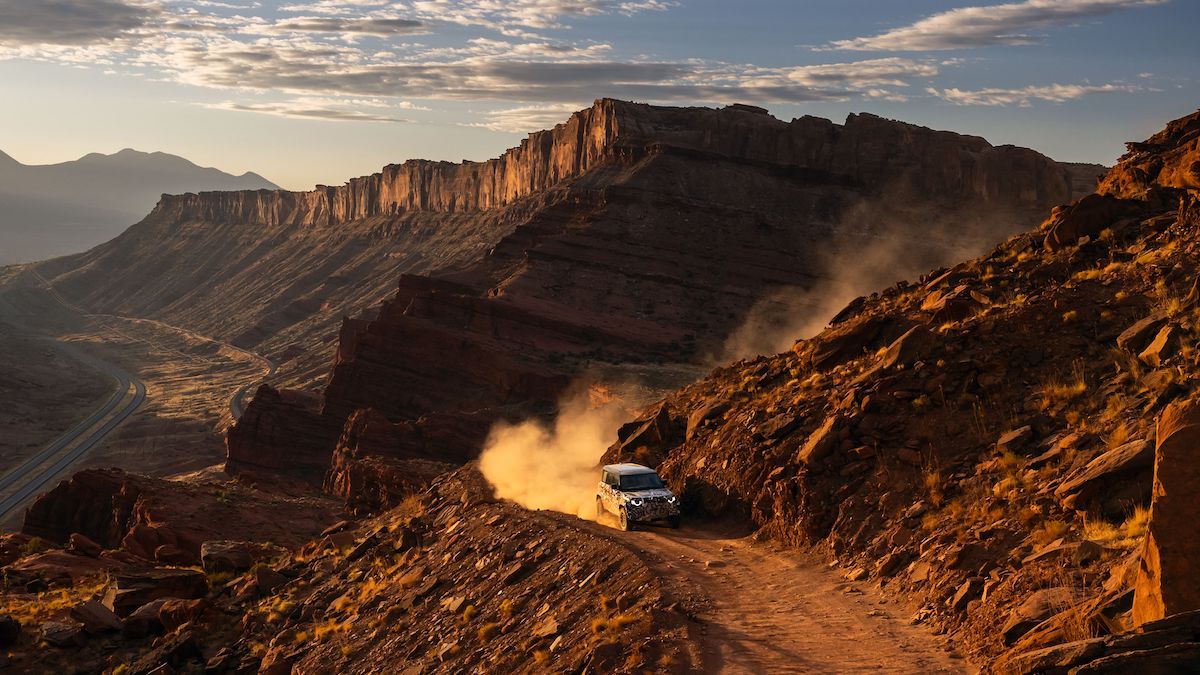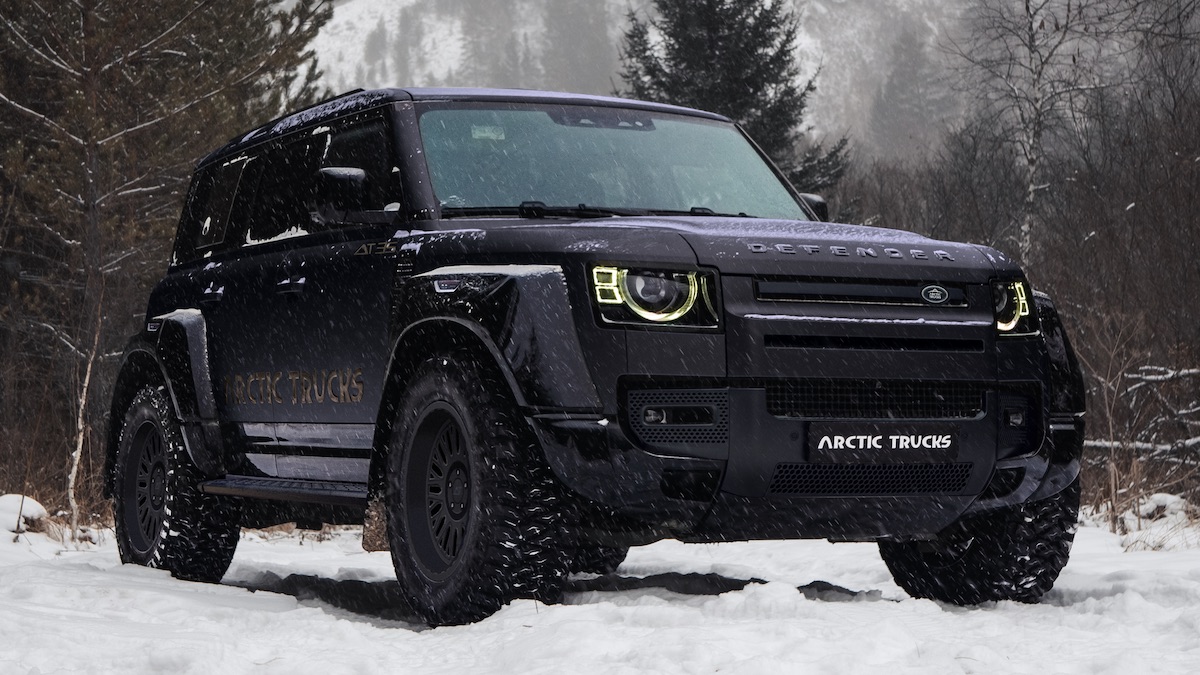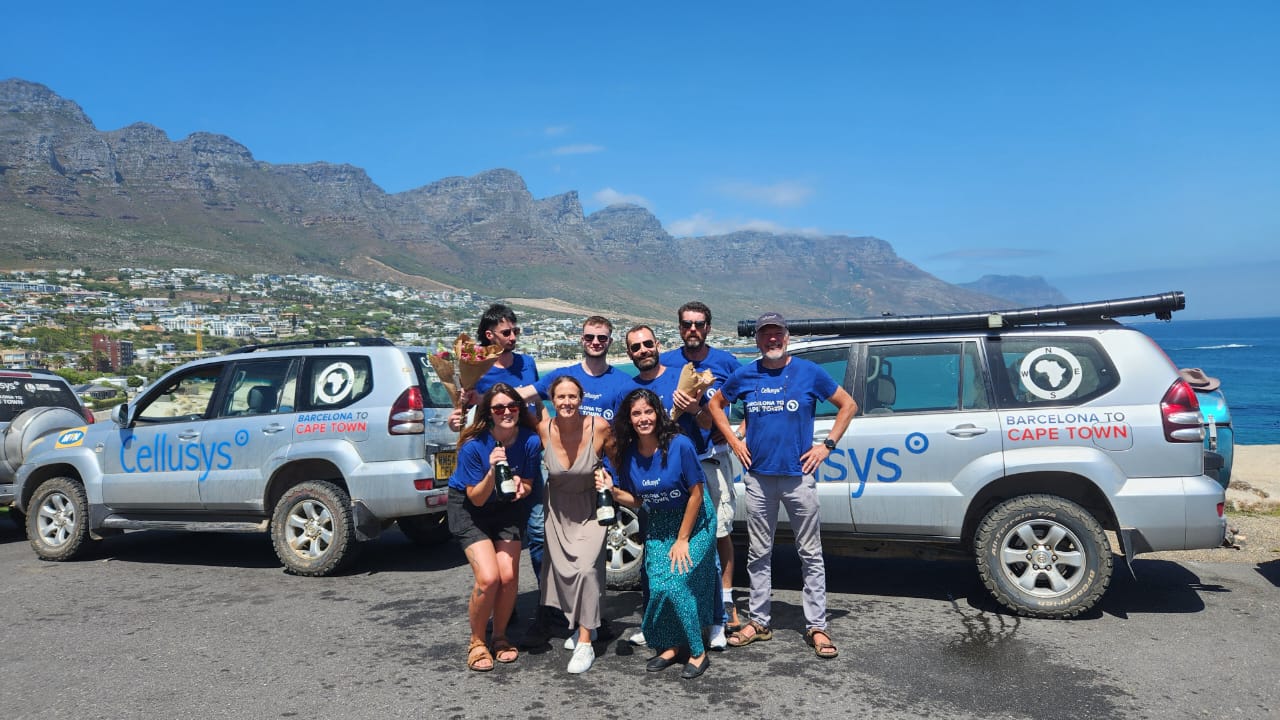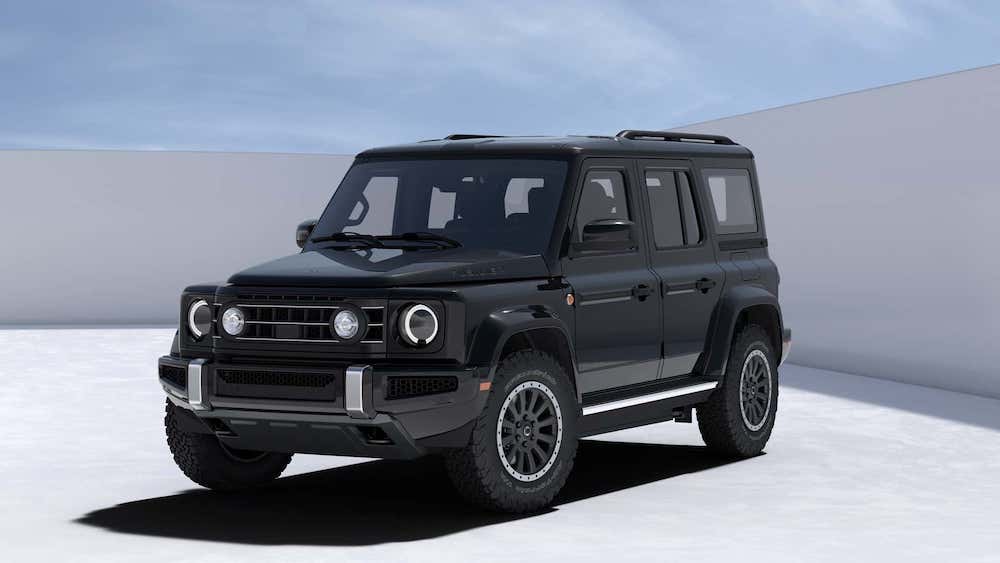Photographs: Jannie Herbst
A comfort zone.
A zone where one feels at home, at ease? comfortable.
Mozambique is not a comfort zone, possibly not even for the majority of its own citizens. There is simply still too much poverty and too many scars left from the 15 year-long civil war that claimed the lives of nearly one million people.
Yet it is a country with hopes and dreams. A country with a vision of righting the wrongs of the past, and a country that seems intent on building a new, prosperous and peaceful future for its children.
A new comfort zone, really.
Driving on the main EN4 highway from the Komatipoort border post towards Maputo, the Mozambique capital, we were ensconced in our very own, air-conditioned comfort zones, in a 15-vehicle convoy.
Our mission?
Mainly, to put eleven double cab bakkies through their paces, on a variety of surfaces, as part of the magazine’s 2009 Mission to Moz adventure.
But also to soak up as much of the vibrancy of modern Mozambique as we could, to experience the unique charm of the rural areas, and to have the opportunity of pitting our 4×4 skills against some extremely sandy terrain. And let’s not forget the attraction of the warm Indian ocean with its mostly unspoilt beaches, and the soothing tropical climate.
We had all met earlier in the day near Komatipoort, kicking off our adventure with? a heck of a lot of paperwork! Third party insurance, South African Revenue Services forms, Mozambique custom and excise forms, vehicle forms. A lot of forms.
Arriving at the border post en masse, the formalities on the South African side were quickly dealt with. On the Mozambique side of the fence the bureaucracy took its time, and some more money too. Eventually, though, our passports and assorted paperwork boasted some fresh, official ink, the vehicles were cleared, and we were on our way.
Next stop, the town of Marracuene, situated 30km north of the capital. And a big slab of rusted metal with a large Mercedes diesel engine rumbling away somewhere in the bowels of the metal. This contraption is loosely referred to as a ferry.
Our journey to Marracuene went without hassle. And so, after arriving at the “port”, the crossing of the Incomati river began in earnest. It was our first taste of rural Mozambique. The real Mozambique.
Loaded with six vehicles at a time (it was a rather tight fit!), along with some bicycles and Mozambicans returning home after a day on the town, the ferry wallowed its way across the Incomati to the opposing bank, and to the island of Macaneta.
Once all 15 vehicles were safely on terra firma the convoy headed off. On the menu was a little side-show, before we reached the Lugar do Mar resort, our first port of sleep-over.
Jaguar, as he is known, is a Mozambican artist with a keen eye for a lucrative business opportunity. Some time ago he had picked up on the popularity of the Afrikaans song Delarey, made famous by artist Bok van Blerk. So Jaguar taught himself the lyrics and the tune, and soon began singing the Delarey song to passing South Africans. For a small fee, of course.
It was an instant hit.
From humble beginnings, his business has blossomed into a small enterprise, and he has expanded his Afrikaans inventory to include Kurt Darren’s Loslappie, and Steve Hofmeyer’s Blou Bul. These days Jaguar also has a song handy for just about any nationality passing his prime business premises. Bob Marley, Portuguese love songs? you name it, he plays it.
You gotta give the man some credit. Instead of sitting back and waiting for divine intervention, he went out there with an idea, and he made it work spectacularly well. Indeed, he created a brand-new comfort zone for himself, not content with the one he was subjected to before.
After the Delarey performance, and with the crimson sky warning of the inevitable darkness to come, we arrived at Lugar do Mar. There, in the bar area, with the eleven double cab bakkies scattered in the parking area, it was time for that first, ice-cold Laurentina beer.
And time to reflect on those double cabs.
Ford was represented by the latest Ranger 3.0 TDCi 4×4, with Conrad and Deidre Groenewald as its custodians. The Ranger recently went for a nip-and-tuck, and now boasts, most prominently, new front-end styling. This was not a simple trim upgrade though, and the Ranger’s nose is comprehensively new. Out is the more macho and brawny nose, and in is a more modern, sleeker look. Other exterior upgrades include new wheels, and new decals.
Behind that new front-end lives Ford’s well-known 3,0-litre TDCi powerplant, boasting 115 kW and an impressive 380 Nm of torque.
Great Wall Motors (GWM) was also there, with managing director Henri Meistre and wife Adele in the Steed 2.8TDI 4×4. The Steed has been around for a while now, and is, in our opinion, the best Chinese bakkie on sale locally. But would it be up for the Mozambican challenge, considering its rather tame 82 kW/280 Nm turbodiesel engine?
With a fresh Laurentina in hand, the survey continued.
Isuzu’s KB300TDi LX 4×4 doesn’t need any special introduction. It’s South Africa’s second most popular double cab, and with its proven 120 kW/360 Nm turbodiesel mill, it wouldn’t have any worries in the sand.
Or would it?
A relatively unknown quantity was Mahindra’s Scorpio Pik Up. Mahindra South Africa’s Christo B?hmer had brought along an accessorised version of the double cab Scorpio, and was joined by friend Rudi Grobbelaar. All that extra weight, and a 2,5-litre turbodiesel engine that produces 74 kW and 258 Nm, pitted against some serious sand driving? Mmmm.
Mazda’s BT-50 3.0CRDi SLE 4×4 was up next. Piloted by Tracey and Brendon Delate, this double cab came with a proven track record – and that 3,0-litre engine with its 115 kW and 380 Nm torque, available from only 1800 r/min. No worries, right?
Mitsubishi was represented by the Triton 3.2 Di-D 4×4 auto, with the company’s Arrie Froelich and Graeme Ingram doing the driving. Like the Mazda, the Mitsubishi Triton is no stranger to sand and 4x4ing, as its endeavours in Sarel van der Merwe’s Spirit of Africa competition suggest. The four-speed auto gearbox was a bit of a grey area, especially in the sand. But with 118 kW and 343 Nm, it shouldn’t have a hard time at all.
Boasting 128 kW and 403 Nm of torque, Nissan’s Navara 2.5dCi 4×4 LE was the most powerful double cab in this test. No wonder custodians Veralda Schmidt and Sorita Bezuidenhout were brimming with confidence ahead of the sand. But would the two ladies from Nissan South Africa make the grade, behind the steering wheel?
Nissan’s NP300 Hardbody 2400i 4×4 was next in line. As the only petrol-drinking double cab, its 16-valve 2,4-litre mill certainly doesn’t lack durability. But in sand, power is vital. With “only” 105 kW and 205 Nm of torque at its disposal, would the Hardbody, driven by novice off-roaders Stephen and Yvette Wrapson, cut it in the sand?
SsangYong’s Actyon Sports double cab is no stranger to sand, and in the 2007 Leisure Wheels Kalahari adventure it showed up many of the more established brands. With the experienced Pedro and Sherene Pereira in the cabin, we expected the 104 kW/310 Nm Actyon to do very well again.
We were not so sure about Tata’s Xenon though, after testing the original 3.0 DICOR 4×4 version in 2008. But Francois Griesel and Henry King, the Tata’s custodians, were not phased by the prospect of sand. They explained that the Xenon is now fitted with a new-generation, 2,2-litre tubodiesel that delivers 103 kW and 320 Nm of torque. Along with a host of improvements over that first model, it should run with the best of them.
Ah, it was a good time for another Laurentina, to celebrate that new engine. If Francois and Henry’s predictions were true, we may be in for a few surprises on this adventure.
The last double cab in this test is South Africa’s most popular bakkie: the Toyota Hilux. The Hilux has a huge local following, and it outsells the other double cabs by so much, it’s almost scary. Driving the 120 kW/343 Nm Hilux was RamsayMedia’s Neil Piper and Dean Dicks.
Would the automatic Hilux prove to be as good as its reputation suggests?
On that bombshell, it was time for dinner.
Prawns, prawns and prawns were on the menu. Some say there was peri-peri chicken too.
Day two – getting jiggy with it
The convoy left the safe and relaxing comfort zone of Lugar do Mar in the morning, bound for Praia do Bilene and the Mahelane Lodge, about 70km north of Macaneta.
This time round we did not make use of the rusty ferry. Sand driving, as the convoy snaked its way north along the Indian ocean, was on the menu. This road is described as a “4×4 only” track, with the hard surface making way for super-soft sand in places. Sure, one can try this in a sedan, but you won’t get very far.
On the day’s itinerary was a bridge-building exercise, some rickety bridge crossings, sand? and lots of radio banter as the convoy headed in a northerly direction.
The spritely Navara ladies opened the account with their rendition of some popular folklore songs. From that moment on, the convoy got jiggy with it, as a variety of tunes were broadcast over the two-way radios.
Some better than others, it must be said.
Before long though, the first sandy patch loomed large. Everyone sailed through.
Meanwhile, the convoy drove through a myriad of small towns. This is, again, the real Mozambique. You don’t see one piece of rubbish lying about. It’s clean and mostly very neat, and the people friendly. Indeed, one can actually imagine walking around here, in these rural areas, without fear of attack, robbery or rape. In most places in South Africa, this is no longer the case.
Finally, late in the afternoon, we arrived at? the bridge. Route director Johan Appelgryn explained that it was time to get down and dirty, and complete a half-built bridge over a river. Johan had already done a lot of work on the bridge a few days earlier.
Er, so why did he not complete the bridge while he was already at it?
Because if he had, he explained, by the time our convoy arrived, it would have been destroyed by local motorists. And then we would have had to start building it from scratch again.
Ahhhh. Okay.
So, with Johan directing proceedings, more heavy stumps were added to the bridge, to handle the bulky double cabs. Soon, it was ready, and the vehicles started to cross. Slowly, in first-gear low-range, with tour leader Francois Rossouw giving directions.
Everyone made it through. Some just did it more elegantly than others.
And so we finally arrived in Bilene. These days, with a massive clampdown on beach and sand driving, Mahelane Lodge is only accessible by speedboat. This boat journey covers 4km, and takes one from the Bilene shore to the other side of the large Uembje Lagoon.
There stands Mahelane Lodge, a luxurious beacon amongst the beautiful surroundings, with the Indian Ocean beating at the shoreline, within hearing distance. With all the bakkies left safely in Bilene, it was soon time for dinner.
There were prawns, prawns and prawns on the menu. Oh yes, and Laurentina beer.
And lastly, a very strong-looking concoction for Deidre Groenewald, who celebrated her birthday.
Day three – Circles in the sand
This was the big sand day.
With all the crews safely back at Bilene, and with all the vehicles ready to get jiggy and ride, the convoy left Bilene. We were on our way to Zongoene Lodge, just south of Xai-Xai. Again, we stuck to the rural sand tracks, instead of the main EN1 highway.
There was good reason for this. We soon arrived at? the dune. A big one, close to the Indian Ocean. This was to be the place where man (and woman) and machine would be put to the test.
Tour leader Francois Rossouw aimed his Toyota Fortuner 3.0D-4D 4×4’s nose down that dune, and instructed the rest of the convoy to hang tight. After two unsuccessful attempts to scale the big dune, Francois dropped the Fortuner’s tyre pressures to 0,8 bar – and only then did the Toyota make it up. It was tricky, to say the least.
And so all the bakkies went down, towards the Indian Ocean.
Francois Rossouw’s now infamous words sounded in all the double cab cabins: “Remember, it’s not only the car, but also the nut that holds the steeringwheel that matters.”
Vitally important was tyre pressure, and 0,8 bar was the going rate. Although some bakkies needed a second or third attempt, as gear selection and available power came into play, every single bakkie made it up there, with Francois directing proceedings over the two-way radio.
It was a mighty impressive, watching complete sand novices relish in the fact that they too had conquered this dune. And mighty impressive too, to see how every single one of the bakkies scaled this challenge.
After a boerie roll on the beach for lunch, and a few more photographs, it was time to get a move on, on our way to Zongoene Lodge, situated next to the mouth of the mighty Limpopo river. Along the way the convoy made a quick pit stop at the Monte Belo lighthouse, the second oldest lighthouse in Mozambique.
Built in 1914, it offers spectacular views of the Limpopo estuary.
At our new comfort zone called Zongoene, the check-in formalities were quickly dealt with. Soon, we were in the restaurant, where there were prawns, prawns and prawns on the menu. Okay, so there was some other nice-looking stuff too, but we didn’t really notice exactly what it was.
With Francois’s famous cookies (cookies dipped in mampoer) dished out to those who had managed to do something that deserved such a horrid-tasting “treat” (or just because he felt like someone needed one), the prize giving was completed.
It was a good day. And importantly, all the bakkies had made it to Zongoene in one piece. Spirits were exceedingly high.
Day four – where the streets have some names
After a leisurely start to the morning, and with a bit of mampoer-cookie taste still lingering in our mouths, we were shocked to find that no prawns were on the menu for breakfast. What is the world coming to?
Okay, seriously now. On the day’s agenda was a relatively long and uneventful drive back to Maputo, and the beautiful Southern Sun hotel, situated right next to the Indian ocean. We had to stick to a tight schedule, to arrive in Maputo by latest 14h30. The reason? The Currie Cup semi finals. The Sharks versus the Cheetahs, and the Blue Bulls versus Western Province.
Maputo itself, with its very Portuguese-like building styles, is a wonderfully horrible place.
Let us explain. Yes, there is a tangible vibrancy in the city, with new restaurants and buildings going up in selected areas. But most of the city is still very run-down, carrying the scars of the civil war.
Some areas feature upmarket palaces masquerading as houses, which are obviously brand new, and which probably retail for millions of rands. Other areas are still very obviously caught in the net of poverty.
Places where the main aim is to go to sleep every night with a half-full belly. One can see the need for a better life engraved in these peoples’ eyes.
However, there is no doubt that Maputo has made huge progress since the early Nineties. Back then, the city was in ruins. Its people too. Who knows where it will be in another 10 or 20 years.
Arriving in the capital and at the hotel, the bulk of the touring party made its way to a restaurant next to the Southern Sun hotel. There the rugby was broadcast on big screen televisions.
Okay, so by the time you read this the 2009 Currie Cup champions will already have been crowned. But that afternoon, in Maputo, was a humdinger. And a good afternoon, depending on which team one supported!
Later, ensconced in the Southern Sun’s upmarket restaurant, the prawns were supplemented by more shellfish such as crab and crayfish. And to cap off a great adventure, we gobbled up some more of Francois’s horrible cookies.
And so, the 2009 Leisure Wheels Mission to Moz adventure came to an end.
It was a good one. One where new friendships were forged. One where the camaraderie amongst the crews was evidently clear. One where everyone was a winner.
And one that again demonstrated the 4×4 abilities of the modern double cab bakkie, as well as the ability to so successfully combine workhorse-cum-leisure roles and characteristics.
Indeed, all 11 of the bakkies are comfort zones, in their own right.
Lugar do Mar – a little bit of paradise
Situated about 35km north of Maputo, Lugar do mar is situated on the “island” of Macaneta. Although one can reach the lodge via road (a big detour), the most popular way to reach the island is via an ancient ferry.
Fully equipped chalets, modern camping facilities, swimming pool, braai facilities and ablutions reside a mere 100m from the beach. Lugar do Mar also offers its own boat/marine slipway and fishing from the beach or by boat, while quad bikes, boats and jet skis are welcome. Indulge in fresh fish and prawns sold on a daily basis by local fishermen or relax in the restaurant and bar.
Contact: www.lugardomar.com; Tel. 00 258 82614-2415.
Mahelane Lodge – lake pleasure
Situated about 4km from the main beach at Praia do Bilene, on its own little “island”, Mahelane Lodge offers a luxurious and exclusive holidaying experience, away from the busy Bilene beaches. Offering stunning views of Uembje Lagoon, with the Indian Ocean just a stone’s throw away too, Mahelane is reachable by speedboat (which the Lodge provides). Besides for obvious activities such as fishing and boating, interesting things-to-do include wake snaking, turtle watching, sea horse dives and whale watching (in season).
Contact: www.mahelanelodge.co.za; Tel. 00 258 82301 9000/00 258 8278 69669
Zongoene Lodge – a fishy deal
This lodge, situated next to the Limpopo river mouth, is famous not only for its luxurious accommodation and suave restaurant, but also for its fishing. The lodge itself features three swimming pools, various luxurious chalet options, and a classy bar and restaurant. On the menu is bird watching, flights in a microlight (seasonal), various indoor entertainment activities, and whale and dolphin watching. Oh yes, and the stunning beaches are great too! A sundowner at the lodge’s elevated beach bar is also one of those “to do” things at Zongoene.
Contact: www.zongoene.com; Tel. 00 258 824 02 6791
Southern Sun Hotel – a stunning stay
Previously known as the Holiday Inn Maputo, the Southern Sun Maputo is situated on the main beachfront, slap bang in the middle of the most vibrant and lively part of the “new” part of the city. With its 158 modern rooms, many of them sea-facing, the Southern Sun offers a break from the worst of Maputo’s noise and traffic. It’s also situated just 7km from the Maputo International Airport. A restaurant, bar, a patio that overlooks the beautiful swimming pool and ocean, a fitness centre, a hairdresser, a boutique and convenience curio shop and two boardrooms all ensure a stay at the Southern Sun Maputo will be a memorable one.
Contact: www.southernsun.com; Tel. 00 258 2149 5050
1. In South Africa we know bakkies as? bakkies. But what are they called in Romania? (answer on page ?)
2. The first factory-assembled “bakkie” made its debut in 1925 and sold for $281. It was called a “Runabout with Pickup body”. More than 34 000 units were built in 1925, and it featured a cargo box, adjustable tailgate and heavy-duty rear springs. Who was the manufacturer? (answer on page ?)
3. Which manufacturer will launch its first one-ton double cab bakkie in 2010, including in South Africa? (answer on page ?)
4. The Guinness world speed record for a standard production bakkie is 274 km/h. Although the bakkie in question was a special performance derivative, the more “sedate” version is on sale in South Africa. Do you know what it is? (answer on page ?)
5. In 1959, a “compact truck” with a 27 kW, 1000cc engine was introduced to the American market – and became the top-selling imported brand in the States, for more than a decade. Who was this manufacturer? (answer on page ?)
6. Which bakkie, on sale today in South Africa (and featuring on this trip), was once called the Mighty Max, in the United States market? (answer on page ?)
Answers:
1. Slippers
2. Ford
3. Volkswagen
4. Chevrolet Lumina SS bakkie
5. Datsun (Nissan)
6. Mitsubishi Triton
On Patrol
The Leisure Wheels editorial team used a Nissan Patrol 4.8 GRX for logistical support and photographic purposes on the Mission to Moz adventure. The reason? It is unstoppable in all 4×4 conditions. Well, except if the driver thinks it’s so good in sand that the tyre pressures are fine at two bar! Not even a Patrol likes that. With the tyres deflated to 0.8 bar, it flew over the sand.
The big Nissan’s straight-six engine delivers 190 kW of power at 4800 r/min, and 425 Nm of torque at 3600 r/min. Part of the attraction of the Patrol is its uncomplicated 4×4 system. You can select between 2H, 4H, and 4Low. A rear differential locks adds further to its off-road prowess. This legendary 4×4 doesn’t get any fancy electronic off-roading aids. That’s because it simply doesn’t need any.
The Nissan Patrol 4.8 GRX Tiptronic sells for R659 700 (includes a three-year/90 000km service plan).
On Mitsubishi
Going to Mozambique without a doctor was not an option. And a doctor-on-call needs a reliable set of 4×4 wheels. So we made Dr. Schalk Reyneke comfortable behind the steeringwheel of a Mitsubishi Pajero 3.2Di-D GLS AT.
The Pajero’s 3,2-litre turbodiesel engine produces 121 kW of power at 3500 r/min, and 373 Nm of torque at 2000 r/min. Coupled to Mitsubishi’s highly revered Super Select 4×4 system, which features shift-on-the-fly 4×4 selection, and centre and rear differential locks, the Mitsu hardly missed the beat, as Dr Schalk explored the limits in the sand. He did that quite often, actually.
Yet the big Pajero soldiered on regardless.
The Mitsubishi Pajero 3.2Di-D GLS AT sells for R594 000 (includes a three-year/60 000km maintenance plan).
